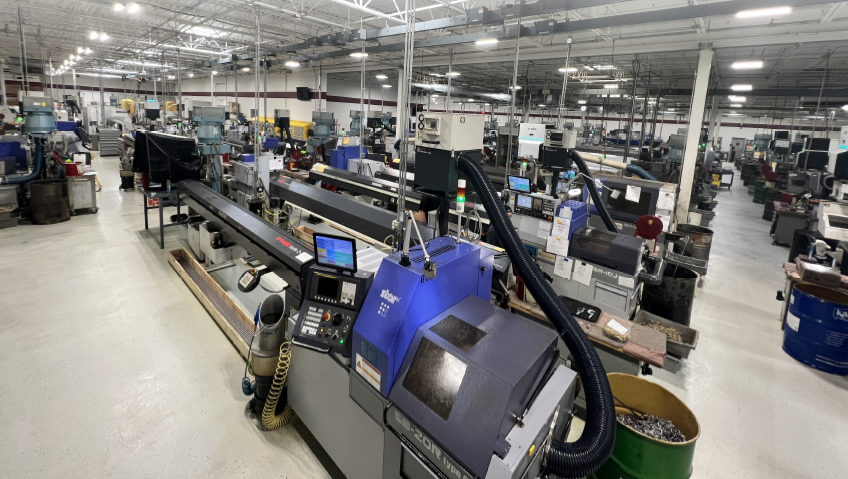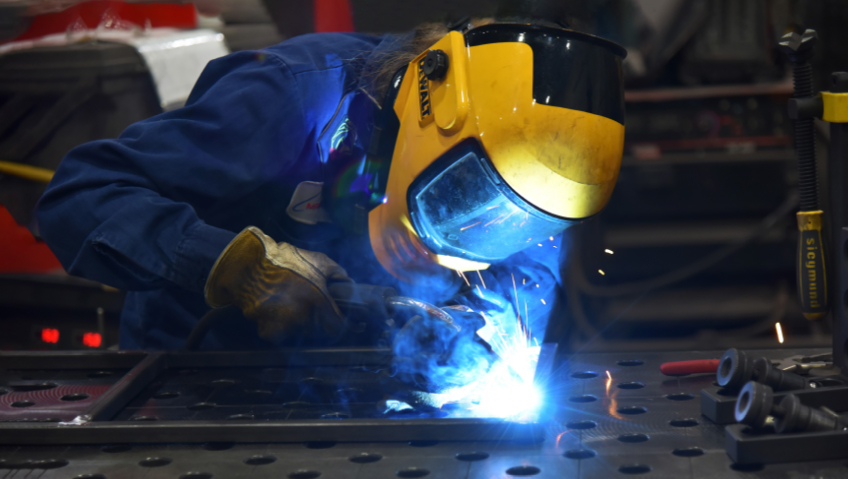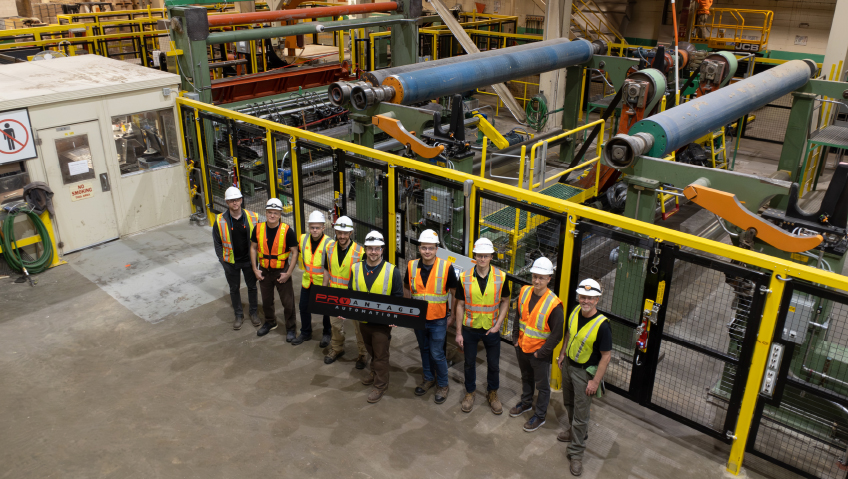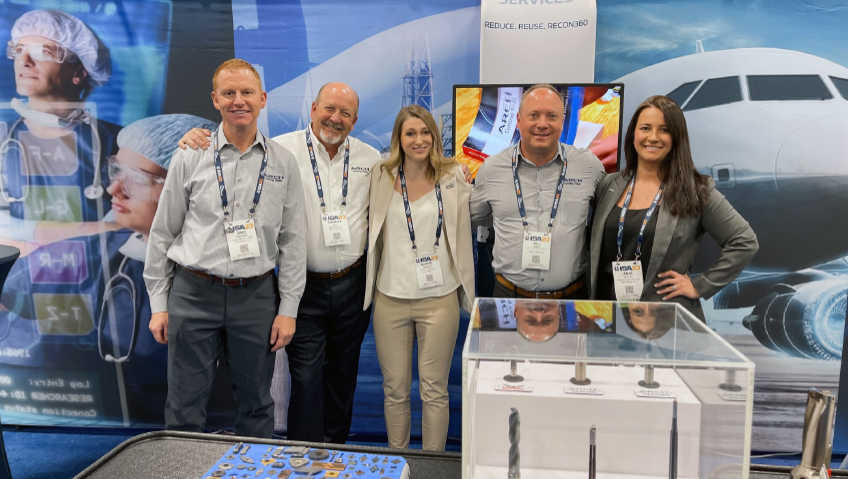Back in the 1960s in the fever of the space race, launching a rocket into the Earth’s orbit was a national endeavour that would eventually lead the U.S. all the way to the Moon. Fast forward 50-plus years and we are fascinated by space again. But what’s changed is the entrance of private companies into these missions, even conducting their own launches.
It doesn’t get better than seeing William Shatner, one of history’s most recognizable science fiction stars, going beyond Earth’s orbit to get us thinking about what could be possible, like a visit to Mars. And now more and more of the next big projects planned to advance space exploration are collaborative efforts between public and private sources.
One of the intriguing possibilities for both private and public agencies is manufacturing in low Earth orbit or outer space.
The remarkable thing about manufacturing off the planet is that you take gravity out of the equation. Gravity—while handy in that it keeps us all on the ground—clouds precise scientific measurements. This includes thermophysical properties of materials as well as how those materials interact in terms of convection, buoyancy, and contact with the container in which they are measured.
When you remove gravity from the environment that you conduct experiments in, you end up with breakthroughs in fluid dynamics, the fundamental internal structure of fluids that can impact formulation chemistry, improve energy generation and, ultimately, make for better manufacturing processes both in space and on Earth.
For instance, fibre optic cables that connect the digital world are made of ZBLAN, which is the most stable and widely used fluoride glass in fibre optics and can cost as much as $1 million for a kilogram. However, one of the things that make it so expensive is that gravity causes imperfections in ZBLAN so it’s more difficult to produce.
But, in a low Earth orbit environment, the dispersion and performance of fibre optics becomes much easier. The purity of the fibre is also increased dramatically, so current thinking is that the potential is there to make digital communications superior to what they are now. In addition, other super alloys benefit from being manufactured in space through the reduction of oxidizing layers in the manufacturing process.
One of the most compelling types of manufacturing that can be used in space is 3D printing. This also extends to the printing of biological materials such as functioning human hearts and food in space, where bovine meat can be grown through 3D printing. An Israeli company has successfully produced meat in a lab on the International Space Station using a 3D printer (without access to all the natural resources required to raise farmed meat). Each slice of Adelph Farms’ steak costs about $50 to produce.
As we push our space exploration efforts and begin to conduct long-term or long-duration exploration of our solar system, the ability to manufacture needed parts or tools in space will become absolutely necessary. By manufacturing in space, significant amounts of risk can also be reduced because systems don’t have to be excessively designed on Earth to work in space, and spare tools don’t need to be made and stored in the vessel in case something breaks.
In an interview with Tech Briefs, Tracie Prater, a materials engineer and the materials and process lead at NASA’s In-Space Manufacturing Project, discusses how 3D printing manufacturing could help further space exploration. “3D printing is about reducing logistics and the amount of mass you have to take,” says Prater. “Perhaps the most exciting part of 3D printing for space missions is that you don’t necessarily know what you might need to print. Manufacturing enables you to create your own solutions. To me, this is a crew safety enhancement.”
Also to be considered is the $366 billion in revenue that has been generated in the “space-for-earth economy” which refers to the goods and services produced in space for Earth, according to the Harvard Business Review. This kind of opportunity can be quite intriguing for manufacturing companies.
Although the possibilities of manufacturing off the planet are intriguing, there are significant hurdles. To make manufacturing as we presently know it happen in low Earth orbit means making some significant changes to the infrastructure that is now orbiting the planet. Deloitte Consulting notes that serious hardware is needed, such as compact nuclear reactors, next generation launch vehicles to transport payloads at lower costs, and advanced robotics to maximize the limited space that would be available in a low Earth setting.
Not only that, making deliveries from space would hardly be a picnic. You would need to overcome the vibrations that go along with a re-entry into the Earth’s atmosphere and landing in safer, but more remote locations would add to what would certainly be a highly complicated supply chain. Then there is the research and development that represents a critical part of the manufacturing process. The space and capacity that would be required for this level of manufacturing would take another International Space Station, but on a much larger scale.
But what if instead of floating in orbit, you could set up a manufacturing complex in a low-gravity environment without needing to build a space station?
In our solar neighbourhood, one of the closest stops is the Moon. At a mere 384,400 kilometers away, getting to the Moon, in astronomical terms, is like going to your house’s garage. It’s this proximity that makes the Moon one of the best options for off-Earth manufacturing. NASA and partners are planning a return to the Moon in 2025 as part of the Artemis program, and ICON, one of the companies connected to this mission, has a vision of lunar infrastructure based on 3D printing.
As Melodie Yashar, Vice President of Building Design at ICON, explains, “We’re looking into how to create horizontal construction elements such as landing pads and roadways and then eventually thinking about how we can develop vertical construction elements.”
As part of a panel discussing what could be possible for the Moon, Sam Ximenes, Founder and CEO of XArc Exploration Architecture Corporation, describes being able to produce bricks on the Moon. “Bricks are a basic building material here on Earth that are used in all kinds of applications,” says Ximenes. “We’ve been able to make bricks in a vacuum.” This is especially important because it proves that off-planet manufacturing has huge potential.
NASA’s Prater also talks about how 3D printing can be used on a Moon base. “Ultimately, I envision a “one-stop shop” manufacturing system or even a suite of manufacturing capabilities that will be deployed on Gateway or in habitats on the lunar surface. The system will have metals manufacturing, polymer manufacturing, and post-processing.”
Beyond manufacturing on the Moon, there is also the possibility of manufacturing based on material collected from the Moon. Blue Origin is the space company set up by Jeff Bezos in 2000, and part of the planning and mission of the company is to move beyond the current state to advance space exploration. One plan is a high-tech manufacturing system to build solar cells from material found on the surface of the Moon, meaning that materials don’t have to be transported from Earth and can reduce the environmental impacts and cost of the manufacturing.
The possibilities of what can be manufactured off the planet are intriguing. While the Artemis project could be the first step, there are many obstacles that need to be overcome. It’s also true that what needs to be built has not been conceptualized yet, but we do know that technological developments have a way of moving things along much faster than we expect. So, while it still may sound a little like science fiction now, so did cellphones at one point—and now we’re streaming Star Trek on those very phones.






